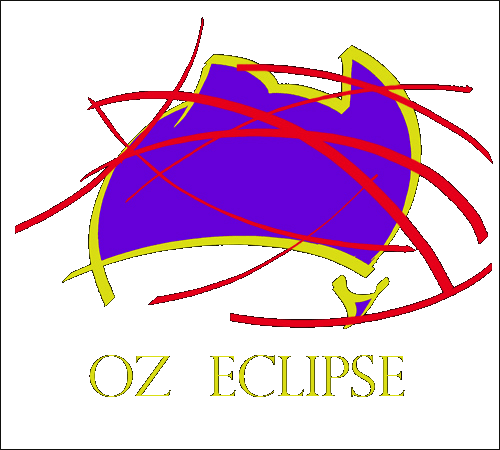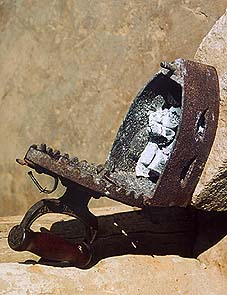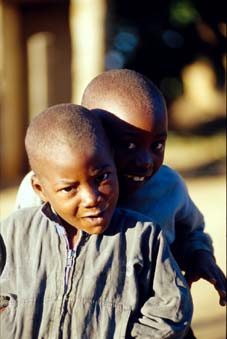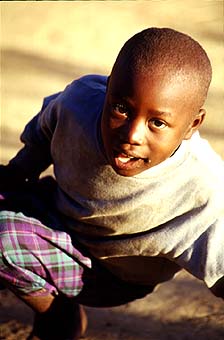
 |
WAITING FOR THE
SHADOW
SOLAR AND LUNAR ECLIPSE OBSERVINGREPORTS AND OBSERVATIONS - ZAMBIA 2001 |
|
|
|
|
|
|
|
|
|
|
|
Kapini Village There is a primary school but no high school. Older students go off and board during their high school years. The government charges fees for schooling. The fees per child amount to a large percentage of each family's annual income. The average family has 5-10 children so it is not possible for all children to go to school without sponsorship from the developed world through organisations like Community Aid Abroad and CCF. CCF has an active project in Kapini that sponsors some children through school and provides treated water and sanitation in the village. My hosts were Gideon and Florence Kasonde and their three children Chicha, Chitambo and Musa. I lived and ate with the family during my stay. The local diet is based around a starch made from boiled ground maize. In Zambia this dish is called Ngima (Pron 'Shima') and is mixed with fish, chicken, eggs or bush rats for protein. Rape, carrots, potatoes and tomato among other vegetables complement the diet. The region is high altitude tropical climate. Tropical fruits are grown locally. Banana's and oranges are the most common fruits. As a visitor, I was able to visit any parts of the village and talk with many different people. In fact, the locals are so friendly that it is near impossible not to. I spoke to many people during my stay. On one occasion I visited an African traditional medicine man with another traveller staying in the village. His grandson translated as he described some of the traditional plants and herbs used as remedies for various ailments. These men were healing men and were at pains to point out that this is quite different to a witch doctor. They declined when I asked to photograph them but said that if I returned another day, they might agree. During my visit I visited the primary school (Kayosha Middle Basic School) and met with the teachers. I wanted to see the educational materials prepared for the eclipse and the methods that they would use to observe the eclipse. The teachers told me nothing had arrived and they only knew what little they had heard on the radio. Men in the village were making plans to smoke glass and children were collecting silver sweet wrappers to view the eclipse. I was horrified. I immediately began working with the teachers constructing safe viewing apparatus out of materials we collected around the village. Shaving mirrors became eclipse projectors that would be used to project the suns image into classrooms and halls. Without power, the school has no local duplication facilities. I hand wrote basic educational and safety information on posters that were put up around the village. The head master and teachers asked me to return on eclipse day to assist the village. I had plans to observe the eclipse with Bengt and Christian who were due to arrive in Lusaka a few days later. I returned to Lusaka saying I would try but could make no promises.
Photos Top left Children of one family. Top right Florenence Kasonde works the land. Below : Chitambo and Musa washing clothes. |
|

 |
 |
 |
 |
 |
 |
(scientific results) |
eclipse photographs |
|
You are on page 2 Go to page 1...2...3...4...5...6.. |